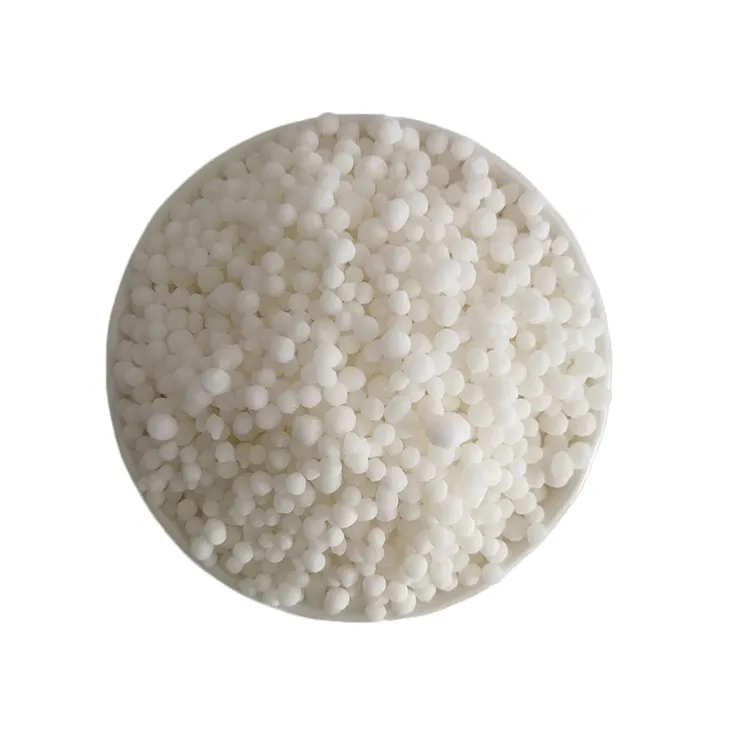Avoid your inquiry is delay response, please enter your WhatsApp/Skype along with the message, so we can contact you at the very first time.
We will reply you within 24 hours. If for urgent case, please add WhatsApp/WeChat:
Warning: Undefined variable $public in /www/wwwroot/lvfertilizer.com/wp-content/themes/hyhadmin/header.php on line 350
Warning: Trying to access array offset on value of type null in /www/wwwroot/lvfertilizer.com/wp-content/themes/hyhadmin/header.php on line 350
,. Or call
Warning: Undefined variable $public in /www/wwwroot/lvfertilizer.com/wp-content/themes/hyhadmin/header.php on line 350
Warning: Trying to access array offset on value of type null in /www/wwwroot/lvfertilizer.com/wp-content/themes/hyhadmin/header.php on line 350
directly.
Many farmers still mix random nutrients. Yields drop, costs rise. Straight vs complex fertilizer confused me too. I will make it clear now.
Straight fertilizer supplies one primary nutrient; complex fertilizer chemically combines two or more nutrients in one granule. The choice depends on crop needs, soil tests, and your application system.
I will answer the core question first, then dive into real examples, use methods, advantages, composition details, and the urea debate. Stay with me if you want fewer mistakes and higher ROI.
Too many names float around. People grab a bag and hope it fits. I have seen that fail. Let me show a clear example and the logic behind it.
NPK 15-15-15, DAP (18-46-0), and MAP (12-61-0) are typical complex fertilizers because nitrogen and phosphorus (and sometimes potassium) are chemically combined in each particle.

Why these products count as complex
Complex fertilizers are made by chemical reactions (neutralizing acids with ammonia, for example). Each granule carries more than one nutrient. That means every plant root that touches a granule gets a balanced dose. When I supplied NPK 15-15-15 to a vegetable farm in Southeast Asia, uniform growth improved because every bed received the same NPK ratio. Blended fertilizers can segregate during transport; complex ones do not as easily.
|
Product Name |
Grade (N-P₂O₅-K₂O) |
Main Nutrient Source Chemistry |
Typical Use Stage |
Application Method |
|
NPK 15-15-15 |
15-15-15 |
Neutralized phosphoric acid + potash + ammonia |
General growth |
Broadcast or base dressing |
|
DAP |
18-46-0 |
Diammonium phosphate reaction |
Rooting/early growth |
Base dressing, planting hole |
|
MAP |
12-61-0 |
Monoammonium phosphate |
Early rooting, foliar |
Water-soluble spray/drip |
|
NPK 16-08-24 |
16-8-24 |
Multi-step granulation |
Fruit setting |
Side dressing/drip |
|
NPK 19-19-19 |
19-19-19 |
Balanced granulation |
Whole cycle |
Fertigation/foliar |
I prefer to start with a soil test, then I pick a ratio like 19-19-19 for broad needs or 15-5-30 when I want higher potassium for fruit size. This simple check saved one of my clients 12% in fertilizer cost last season.
Big bags look the same, but use is not. Over-application burns roots. Under-application wastes money. I learned that the hard way in my early years.
Use complex fertilizer based on soil tests, crop stage, and delivery system. Split doses, place it close to the root zone, and always follow recommended rates for your irrigation method.

Get a soil test. If you cannot, at least check last season’s performance. Straight guesswork is dangerous.
Use a higher phosphorus grade (like 12-36-12) during rooting. Switch to high potassium (like 15-5-30) for fruit fill. Balanced grades (19-19-19) are safe for general growth.
Do not dump everything at planting. I split into 3–4 smaller doses. This keeps nutrients available and reduces leaching. Drip systems love smaller, regular feeds.
In fertigation, monitor solution EC. High EC can lock water uptake. Adjust pH so nutrients stay soluble.
|
Method |
Pros |
Cons |
Best For |
|
Broadcast |
Simple, fast |
Uneven root access, waste |
Large field crops |
|
Banding |
Efficient placement |
Needs precise equipment |
Row crops, limited fertilizer |
|
Fertigation |
Precise, flexible, low waste |
Needs irrigation system |
High-value crops, greenhouses |
|
Foliar Spray |
Quick correction, micronutrient boost |
Limited macro nutrient load |
Micronutrient top-ups |
Apply when soil is moist but not flooded. Avoid leaf contact with high-salt solutions. Wear gloves, mask, and follow label instructions.
I once reduced tomato blossom-end rot by switching from one heavy basal application to four small fertigations with a 12-12-36+TE formula. Simple change, big gain.
People ask why pay a bit more for complex fertilizer. The answer sits in uniformity, efficiency, and logistics.
Complex fertilizers give uniform nutrient distribution, reduce segregation, simplify handling, and can improve nutrient use efficiency, especially in precision farming systems.

Every granule carries the set ratio. No “hot spots” of nitrogen or phosphorus. This helped a melon grower I know get even fruit size.
Blended products can separate during transport. Complex ones hold the same analysis throughout the bag and field.
One product, one storage bin. This matters in warehouses with limited space or in remote farms.
Because nutrients come together, plants often take them up more evenly. Some studies show better NUE (nutrient use efficiency), especially under drip.
|
Advantage |
Why It Matters |
Impact on Farm Ops |
|
Uniform nutrient spread |
Even crop growth |
Consistent yield, simpler scouting |
|
Less segregation |
Stable analysis from bag to field |
Accurate dosing, fewer surprises |
|
Simplified handling |
Fewer SKUs, less mixing |
Lower labor, less error |
|
Higher NUE potential |
Balanced uptake, less leaching |
Cost savings, environmental gains |
If you only need nitrogen, a straight product may be cheaper. If soil already has high P, a high-P complex fertilizer wastes money. I always weigh soil data before I decide.
I often get asked “what is inside this granule?” People think it is magic. It is chemistry and process control.
A complex fertilizer contains two or more primary nutrients (N, P, K) chemically combined in each granule, often produced by neutralizing acids with ammonia and adding potash, plus possible trace elements.
Calcium, magnesium, sulfur, and trace elements like Zn, Fe, B, Mn can be included. In my plant, we often add Zn and B for fruit crops.
To keep granules strong and low-dust, manufacturers add binders. Anti-caking agents keep flow good in humid climates.
|
Component Type |
Typical Source |
Role in Product |
|
Nitrogen |
Ammonia, urea |
Growth, leaf area |
|
Phosphorus |
Phosphoric acid, MAP/DAP base |
Roots, flowering |
|
Potassium |
MOP (KCl), SOP (K₂SO₄) |
Fruit size, disease resistance |
|
Micronutrients |
ZnSO₄, Fe-EDTA, Borax |
Enzymes, chlorophyll, stress tolerance |
|
Conditioners |
Anti-caking agents |
Flowability, storage stability |
This process gives me control. If a client in Brazil needs 13-3-43+TE for fruit crops, I can adjust the slurry before granulation. That is our edge.
Many people lump urea with NPKs. That leads to wrong mixes. I have seen burned leaves and soil imbalance.
Urea is a straight fertilizer. It supplies only nitrogen (46% N) and does not contain phosphorus or potassium in the same granule.

Urea has one nutrient: nitrogen. It is produced from ammonia and carbon dioxide. No P, no K. So it is not complex.
Use urea when soil or crop only needs nitrogen. Blend or apply with P and K if needed. I often pair urea with a high-K complex grade later in the season.
|
Fertilizer |
N (%) |
P₂O₅ (%) |
K₂O (%) |
Type |
Typical Use |
|
Urea |
46 |
0 |
0 |
Straight |
N boost, foliar (low rate) |
|
NPK 19-19-19 |
19 |
19 |
19 |
Complex |
Balanced feeding |
|
DAP |
18 |
46 |
0 |
Complex |
Base P and N supply |
Urea volatilizes if left on the surface in warm, moist conditions. Incorporate or irrigate it in. Add urease inhibitors if needed. I learned to apply urea before rain or with quick irrigation. That simple timing cut nitrogen loss.
Straight equals single nutrient. Complex equals combined nutrients in one granule. Test soil, match crop stage, split doses, and choose smart to save money.
| Fertilizer Name | Type | N (%) | P₂O₅ (%) | K₂O (%) | Use Scenario |
|---|---|---|---|---|---|
| Urea | Straight | 46 | 0 | 0 | Nitrogen boost for leafy growth |
| NPK 15-15-15 | Complex | 15 | 15 | 15 | General balanced feeding |
| DAP (18-46-0) | Complex | 18 | 46 | 0 | Root growth, basal application |
| MOP (KCl) | Straight | 0 | 0 | 60 | Increase fruit size, quality |